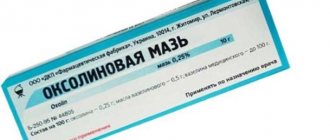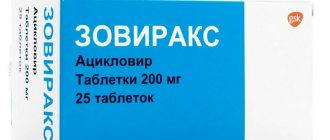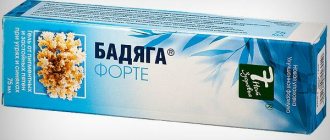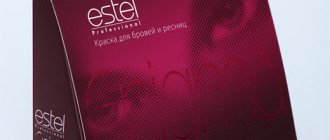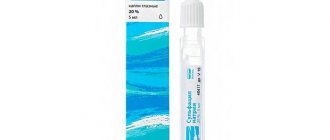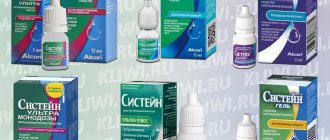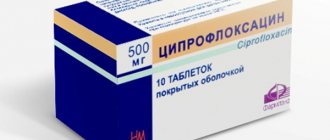Composition and effects
Actovegin cannot be considered from the point of view of generally accepted pharmacological norms, since it contains only natural components present in any organism.
The main active ingredient of the drug - deproteinized hemodialysate (concentrate) from the blood of young calves - has an antihypoxic effect, improves blood circulation, stimulates phosphate metabolism, accelerates the breakdown of lactic acid salts and ketones, restores pH and tissue trophism.
The secondary effect of Actovegin is to activate glucose consumption and increase the energy resources of the cell. The medicine increases tissue resistance and reduces intraocular pressure.
The additional components included in the product have no therapeutic value and are required only to ensure the technological properties of the drug.
Composition of Actovegin eye gel
Actovegin 20% eye gel is used in ophthalmology for the following indications:
- Corneal ulcers of various origins;
- Burns of the cornea with acid, alkali, lime;
- Radiation damage to the cornea;
- Corneal epithelial defects in patients who use contact lenses.
The drug is used to prevent lesions during the selection of contact lenses in patients with atrophic and dystrophic processes in the cornea.
The active component of the drug is deproteinized hemoderivat, obtained from calf blood.
In addition, the gel contains a certain amount of excipients - thiomersal, lactic acid, carboxymethylcellulose and sorbitol. The drug is safe for people, since animals that are donors of biological material undergo strict epidemiological control.
The components necessary for the production of the medicine are collected only from young individuals. During the production of the gel, all pathological microflora of the biomaterial must be destroyed.
Release form
The imported drug Actovegin is produced by the Swiss pharmaceutical company Nycomed. In Russia, the largest pharmaceutical industry is engaged in the production of medicine.
Both brands produce several versions of Actovegin:
- eye gel at 20% concentration;
- cream and ointment in aluminum tubes;
- tablets in glass bottles;
- solution for intravenous and intramuscular injections.
In the ophthalmological field, eye gel is most often used, packaged in 5 ml tubes. It is a transparent jelly with a yellowish tint and no odor. It has a uniform texture and good fluidity.
Tablets and solutions are widely used in the treatment of neurological and vascular diseases. With their help, they eliminate the consequences of stroke, dementia, and traumatic brain injury.
Dosage and method of administration
The drug is intended exclusively for topical use. One or two drops of gel are squeezed directly from the tube into the affected eye.
The frequency of use is from one to three times a day. The duration of treatment is determined by the indications.
Side effects
Among the side effects of the eye gel, one can note the development of allergic-type reactions, which are observed quite rarely.
Despite all the variety of indications, the main form of release of Actovegin for ophthalmic practice is gel. It is most convenient for daily use and allows the patient to independently use it at home.
Actovegin is produced in special tubes of five ml, placed in a thick cardboard case. The structure of the gel is homogeneous, colorless and transparent. Its composition is based on a hemoderivative of calf blood, which is previously completely deproteinized.
In ophthalmic practice, Actovegin is used only externally. Two drops of the substance are carefully placed from the tube into the affected eye three times a day. The doctor may develop a different regimen for using the gel.
The main contraindications to the constant use of Actovegin are most often:
- allergy;
- individual intolerance;
- bearing a child;
- breastfeeding period.
During pregnancy, it is generally not recommended to use any pharmacological agents, but Actovegin gel, with the special permission of a doctor, is allowed for use in some cases.
Actovegin can be used in different doses, which are determined by the specific nosology of the disease and the severity of its course.
Dragees are prescribed 1-2 times a day before meals.
When administered intramuscularly, the initial dose is 10-20 ml, which is then reduced to 5 ml per day. When administering Actovegin intravenously, 250 ml of solution is administered dropwise every day or several times a week. The duration of the course is 10-20 days.
Local forms of Actovegin (gel, cream, ointment) are applied directly to the wound surface in a thin layer. The frequency of application is 2-3 times a day. When using an eye gel, 1-2 drops of medication are squeezed onto the surface of the eye directly from the tube. The duration of treatment is determined by the doctor.
We invite you to read: Is insomnia a disease or not?
Actovegin eye gel is a homogeneous transparent mass of white or slightly yellowish color. The active component of the drug is deproteinized hemoderivative of calf blood.
When a high concentration of a medicinal substance is needed in one place, transdermal treatment methods are used. Such dosage forms reduce the risk of complications from the digestive system. After being introduced into the skin, the active components gradually enter the hematopoietic system.
The gel is a soft form of the product that has a viscous consistency. Plasticity, elasticity, and the ability to retain shape are the hallmarks of the gel. The acidity of the gel is approximately the same as the acidity of the skin. The drug does not clog pores, it is distributed quickly and evenly. The drug does not contain any toxic substances.
Actovegin ointment is prescribed by doctors in the following cases:
- corneal ulcer;
- corneal burn;
- radiation injuries;
- patients wearing contact lenses who have a defect in the corneal epithelium;
- age-related atrophic keratitis;
- prevention of corneal injuries.
The gel has an antihypoxic function
The drug is used as prescribed by a doctor for a number of diseases and disorders.
- complex treatment of vascular and metabolic disorders of the brain (ischemic stroke, dementia, insufficiency of cerebral blood flow, head injury);
- diabetic polyneuropathy;
- arterial and venous vascular disorders, as well as consequences associated with such disorders (trophic ulcers, angiopathy).
Actovegin droppers and injections are prescribed for similar diseases and conditions of the body.
- inflammatory processes of the skin and mucous membranes, wounds (burns, abrasions, cuts, cracks, etc.);
- weeping ulcers, varicose veins, etc.;
- to activate tissue regeneration after burns;
- for the purpose of treatment and prevention of bedsores;
- in order to prevent skin manifestations associated with the effects of radiation.
For the same diseases, Actovegin cream is used.
Indications for the use of Actovegin gel are similar, but the drug is also used to treat the surface of the skin before starting the process of skin transplantation in the treatment of burn disease.
The use of the medicine in various forms for pregnant women is carried out for similar indications, but only after a doctor’s prescription and under his supervision.
Actovegin for athletes is sometimes used to increase their performance.
Why Actovegin ointment, as well as other forms of drugs, are also used, and why one or another form helps, will be consulted by the attending physician.
We suggest you read: Is it possible to do without surgery after a heart attack?
The medicine is prescribed in the form that will be most effective for a particular disease.
The drug in the form of an injection solution can be administered intravenously, intraarterially or intramuscularly.
Injections, depending on the severity of the disease, are carried out in a dose of 10-20 ml intravenously, after which slow administration of 5 ml of solution intravenously is practiced. The drug in ampoules must be administered every day or several times a week.
Ampoules are prescribed for disorders of metabolism and blood supply to the brain. Initially, 10 ml of the drug is administered intravenously over two weeks. Then, for four weeks, 5-10 ml are administered several times a week.
Patients with ischemic stroke are given 20-50 ml of Actovegin intravenously, previously diluted in 200-300 ml of infusion solution. The drug is administered every day or several times a week for two to three weeks. People suffering from arterial angiopathy are treated similarly.
Patients with trophic ulcers or other indolent ulcers or burns are prescribed 10 ml intravenously or 5 ml intramuscularly. This dose, depending on the severity of the lesion, is administered once or several times a day. Additionally, local therapy is carried out.
To prevent or treat radiation-induced skin lesions, 5 ml of the drug is used intravenously every day, during the intervals between radiation exposure.
Infusions are carried out intravenously or intraarterially. The dose depends on the diagnosis and condition of the patient. As a rule, 250 ml are prescribed per day. Sometimes the initial dose of a 10% solution is increased to 500 ml. The course of treatment can range from 10 to 20 infusions.
Before infusion, you need to make sure that the bottle has not been damaged. The flow rate should be approximately 2 ml per minute. It is important that the solution does not enter extravascular tissues when injected.
The tablets should be taken before meals, there is no need to chew them, they should be washed down with a small amount of water. In most cases, 1-2 tablets are prescribed three times a day. Therapy usually lasts from 4 to 6 weeks.
For people suffering from diabetic polyneuropathy, the drug is initially administered intravenously at 2 g per day for three weeks, after which tablets are prescribed - 2-3 pieces. per day for 4–5 months.
The gel is applied topically to cleanse wounds and ulcers, as well as their subsequent treatment. If there is a burn or radiation injury on the skin, the product should be applied in a thin layer. If there is an ulcer, apply the gel in a thick layer and cover it with a compress soaked in Actovegin ointment.
We suggest you read: How Actovegin affects a person’s blood pressure
The bandage needs to be changed once a day, but if the ulcer gets very wet, then this needs to be done more often. For patients with radiation injuries, the gel is applied in the form of applications. To treat and prevent bedsores, bandages need to be changed 3-4 times a day.
It is used to activate the healing process of wounds and weeping ulcers. After treatment with the gel, Actovegin is used to prevent the development of bedsores. For the treatment and prevention of radiation injuries, the use of cream 2-3 times a day is indicated.
The ointment is indicated for long-term treatment of ulcers and wounds; it is used after completion of treatment with gel and cream. The ointment is applied to skin lesions in the form of bandages, which need to be changed up to 4 times a day. If the ointment is used to prevent bedsores or radiation injuries, the bandage should be changed 2-3 times.
Actovegin ointment for burns must be applied very carefully so as not to damage the skin, for which it is best to initially apply the ointment to the bandage.
"Actovegin" is a drug that activates tissue metabolism, stimulates regeneration processes and improves trophism. Available in the form of a solution for injection, solution for infusion, film-coated tablets, as well as in the form of ointment and gel.
In ophthalmology, eye gel is used. It is used for burns, corneal ulcers, keratitis of various origins and for the treatment and prevention of radiation damage to the cornea.
The drug is available in five gram tubes, packaged in cardboard boxes, instructions are included. Actovegin eye gel is a homogeneous, transparent mass, colorless or slightly yellowish.
Its active substance is deproteinized hemoderivative from calf blood (dry mass) (eight milligrams). Auxiliary components include carboxymethylcellulose, sorbitol, lactic acid, thiomersal.
This drug helps to activate metabolism in tissues, improves trophism and stimulates regeneration processes. In ophthalmology it is used topically.
"Actovegin" activates cell metabolism by increasing the transport rate and further accumulation of oxygen and glucose, enhancing intracellular utilization.
As a result, there is an increase in the energy resources of the cell, especially under conditions of ischemia and hypoxia.
Pharmacokinetics
It is impossible to study the pharmacokinetic characteristics (absorption, distribution, excretion) of a drug, since it consists of physiological components that are usually present in the human body.
To date, no decrease in the pharmacological activity of the active substance has been detected in patients with altered pharmacokinetics (including renal and liver failure, age-related metabolic changes).
Tags: actovegin, eye, disease
About the author: admin4ik
« Previous entry
Indications and contraindications
Indications for the use of Actovegin gel, ointment and cream are quite numerous. Among them, various lesions of the outer part of the eye are especially distinguished:
- burns;
- ulcers;
- complications after transplantation;
- keratitis;
- conjunctivitis;
- dry cornea;
- damage to the sclera as a result of the use of hard lenses.
The gel form of the drug has no restrictions on use and does not have a resorptive effect. For pregnant women and children, the medication is prescribed on a general basis; treatment with an external agent is also acceptable during lactation.
Instructions
Instructions for use require introducing Actovegin gel into the conjunctival sac, avoiding contact of the bottle spout with the surface of the eye or foreign objects. The frequency of application should not exceed 3 times a day. The duration of therapy is determined by the ophthalmologist.
Actovegin ointment instructions for use recommends use in oncology after radiation therapy. The mixture is placed behind the eyelid using a glass rod, then gently kneaded with a finger for better distribution. The active substance in a lower concentration (5%) is well tolerated and provides effective protection against chemotherapy, preventing drying of the sclera. Treatment can be carried out both during irradiation and in the intervals between sessions.
Storage of an opened tube of ointment or gel should not exceed 28 days. The shelf life of the sealed drug is 5 years.
Laser treatment of retinal dystrophy
Treatment of retinal dystrophy with laser is fast, low-traumatic and bloodless. The doctor uses laser pinpoint radiation to target areas of pathology. Damage to healthy tissue is completely excluded, and the risk of side effects and complications is minimal. The transpupillary method and focal coagulation are recognized as the most effective.
Transpupillary treatment involves using a weak, wide-area laser. A small amount of energy prevents the formation of coagulants, but has a positive effect on the functioning of the fundus. Phagocytes are activated, blood flow improves, and the antioxidant properties of the retina increase.
Focal coagulation is recommended for patients with peripheral dystrophy when the macula is almost unaffected. The doctor creates point coagulants on the retina to minimize the risk of detachment. After treatment, patients need to take angiogenesis inhibitors to prevent the growth of abnormal blood vessels.
Retinal dystrophy is a common and dangerous disease. It is usually diagnosed in older people, but young people should also monitor their health, take preventive measures and visit an ophthalmologist twice a year.
Side effects
As a rule, Actovegin in the form of cream and gel is well tolerated, but in rare cases it can cause undesirable reactions from the eyes or the body as a whole. Most often, patients complain of the following side effects:
- redness and itching of the cornea;
- feeling of sand under the eyelids;
- dry mucous membranes.
On the part of the body, intolerance to Actovegin can manifest itself as shortness of breath, skin rash, and very rarely - anaphylactic shock.
If such symptoms appear, you should stop using the drug and consult a doctor to change the drug.
Analogs
There are no structural substitutes for Actovegin. You can only choose a remedy that is similar in action and has a similar effect.
So, Algofin and Solcoseryl can become analogues of ointment and gel. The latter drug contains the same dialysate from the blood of young cattle, but Actovegin has a longer shelf life due to the content of preservatives. Is this an advantage or a disadvantage? Hard to say. Some ophthalmologists note the negative impact of the supplement on the patient’s liver and kidneys.
Algofin ointment also has a natural composition, but of plant origin, so it can hardly be called a complete analogue of Actovegin, although the indications for the drugs are the same.
You should not select an Actovegin analogue on your own. It is better to entrust such an event to a specialist, since he perfectly knows the description of the drugs, has information about contraindications and possible adverse reactions.
Actovegin is a common and effective medication for eye treatment. It is used for very serious diseases and has a minimum of contraindications. Despite this, you should not prescribe the gel or ointment yourself.
Author: Elena Medvedeva, doctor, especially for Okulist.pro
Surgical treatment of retinal dystrophy
The help of surgeons is indicated in severe cases of dystrophy, when there is a serious threat to vision. There are several effective methods for treating degenerative processes surgically, but laser coagulation is recognized as the fastest and most effective.
Methods of surgical treatment of retinal dystrophy:
- Laser coagulation. The method does not require opening the eye; all manipulations are carried out contactlessly. The risk of infection and postoperative complications is eliminated. Laser surgery is indicated even for pregnant women and girls.
- Revascularization and vasoreconstruction. Treatment involves restoring blood vessels using various microsurgical methods and improving the blood supply to the retina by cutting the arteries.
- Vitrectomy. In case of lateral dystrophy, the vitreous body may be removed and replaced with a special material to prevent or treat retinal detachment. The replacement does not affect the functioning of the eyeball, since biologically compatible materials are used.


